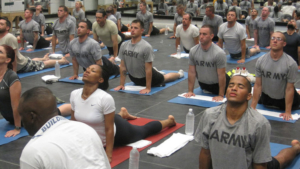Soldiers Opioid Use Decreases

By Debbie Gregory.
Members of the armed forces are not immune to the substance use problems that affect the rest of society. The Army’s efforts to find alternate methods of pain management for active duty soldiers have resulted in a decrease of opioid use by more than 3 percentage points.
From 2012 to 2016, opioid use fell from about 10.5 percent to about 7 percent.
“This addiction problem recognizes no distinction between those who wear the uniform and those who don’t,” said Lt. Gen. Nadja West, speaking at the Association of the U.S. Army’s annual conference in Washington, D.C.
With that said, studies have shown that soldiers and veterans use opioid painkillers, essentially the chemical equivalent of heroin, far more frequently than civilians because their military training, combat -related injuries and the strains from carrying heavy equipment during multiple deployments likely play a role in this trend.
A 2012 report prepared for the DoD by the Institute of Medicine (IOM Report) recommended ways of addressing the problem of substance use in the military, including increasing the use of evidence-based prevention and treatment interventions, while expanding access to care.
The report also recommended broadening insurance coverage to include effective outpatient treatments and better equipping healthcare providers to recognize and screen for substance use problems so they can refer patients to appropriate, evidence-based treatment when needed. It also recommends measures like limiting access to alcohol on bases.
At that time, the Army implemented changes that included limiting the duration of prescriptions for opioid pain relievers to six months, and having a pharmacist monitor a soldier’s medications when multiple prescriptions were being used.
Now officials have shifted their focus to seek out alternatives to prescribing medication, including meditation, tai chi, acupuncture and yoga.
Military Connection salutes and proudly serves veterans and service members in the Army, Navy, Air Force, Marines, Coast Guard, Guard and Reserve, and their families.

















